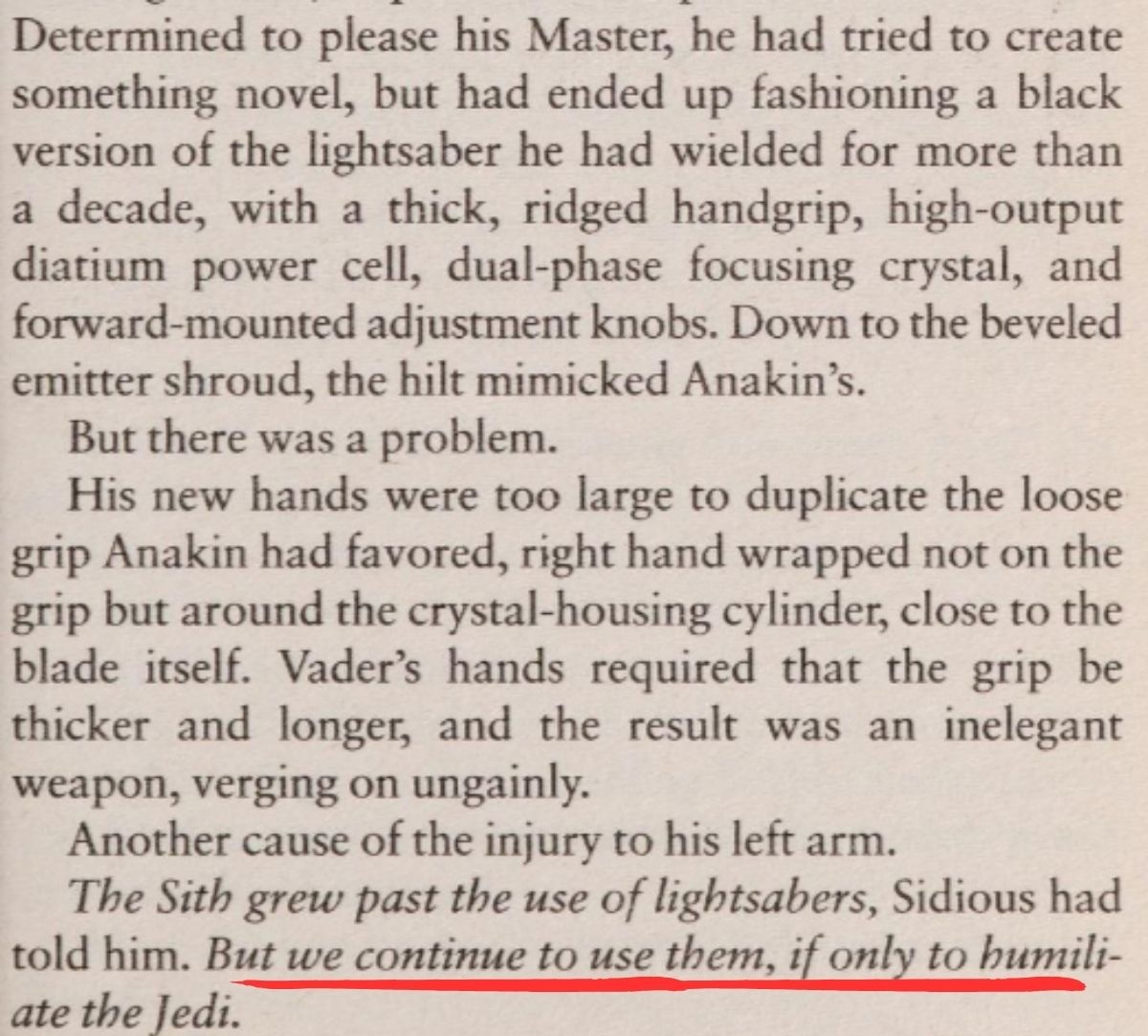The lightsaber has always been the most iconic weapon of both the Jedi and the Sith. It’s more than just a blade, it’s a tool only Force wielders can truly master. For most, it represents tradition, discipline, and the power of the Force itself.
But Palpatine didn’t see it that way. He didn’t carry a lightsaber because it was expected of a Sith. He wielded it to mock the Jedi. He turned their most sacred symbol into a weapon of humiliation, and even passed that ideology on to Darth Vader.
Palpatine Only Used a Lightsaber to Humiliate the Jedi
Emperor Palpatine had a well-known disdain for lightsabers. He saw them as symbols of the Jedi’s limited thinking—a crutch that kept them from understanding the true potential of the Force. In his view, the Force could turn anything into a weapon, making a lightsaber unnecessary. Palpatine preferred to wield power through manipulation, fear, and mastery of the dark side—not through physical combat.
One of the clearest examples of this mindset comes from the Legends novel Star Wars: The Rise of Darth Vader. The book follows Vader’s early days as Palpatine’s apprentice. When Vader begins constructing his first red-bladed Sith lightsaber, he briefly reflects on the design of his master’s hilt—and doesn’t particularly like it. But more importantly, the book shows us that Palpatine had little interest in lightsabers at all. He believed the Sith were stronger because of their connection to the dark side, not because of any weapon. When he used a lightsaber in battle, it was purely to humiliate the Jedi on their own terms.
The book describes Vader’s effort to build a new saber: “Determined to please his Master, he had tried to create something novel, but had ended up fashioning a black version of the lightsaber he had wielded for more than a decade… the hilt mimicked Anakin’s.”
However, Vader’s cybernetic hands made things difficult.“His new hands were too large to duplicate the loose grip Anakin had favored… Vader’s hand required that the grip be thicker and longer, and the result was an inelegant weapon, verging on ungainly.”
While forging his new lightsaber, Vader remembered something Sidious had told him: “The Sith grew past the use of lightsabers,” Sidious had said. “But we continue to use them, if only to humiliate the Jedi.”

In his eyes, the Jedi’s reliance on their lightsabers was a flaw, which he took advantage of by mastering the Force in ways they never imagined. This perspective is illustrated in the comic “Star Wars #25” from 2022, where Palpatine teaches Darth Vader to fight with the ruthlessness of a Sith Lord. In a lightsaber duel, Palpatine easily overpowers Vader, not solely with the saber but with the aid of the Force. He emphasizes to Vader that a Sith’s arsenal extends beyond the lightsaber, requiring the full embrace of the dark side’s power.

The Dual Nature of Palpatine’s Lightsabers
Palpatine’s lightsabers reflected his character—refined, commanding, and brutally efficient. They were made with rare materials like electrum, phrik alloy, and aurodium, signaling both his power and status. The electrum finish wasn’t just decorative—it was a mark of authority, often reserved for the elite during the Republic era. Palpatine used it to assert that he was above both the Jedi and the Sith.
Even though he looked down on lightsabers, he mastered all seven forms of lightsaber combat. The one he used most was Form VII, also known as Juyo or Vaapad. It was aggressive, relentless, and fueled by emotion—everything the dark side thrived on. This form let him channel his anger into power and break his opponents with overwhelming speed and force. It was the perfect match for how he fought—and how he ruled.
A Sith Twist on a Jedi Symbol
For the Jedi, the lightsaber was a deliberate choice—a weapon that demanded discipline, restraint, and accountability. In Marvel’s Star Wars #25, Obi-Wan explains this to Anakin beneath the great Uneti tree: unlike blasters or bombs, a lightsaber couldn’t level cities or planets. It forced the wielder to act with precision, to be a protector rather than a destroyer.
Even when Anakin brought up the Sith—who used lightsabers too—Obi-Wan had an answer. “True,” he said. “But ultimately, I believe they use lightsabers because they like to think that anything the Jedi can do, they can do better.” (Read full story here)
That idea cuts directly to Palpatine. His philosophy twisted the Jedi’s most sacred emblem into a mockery, turning their symbol of protection into a stage for Sith arrogance. Where the Jedi wielded their sabers with responsibility, Sidious carried his only to show he could outdo them—even on their own terms.

